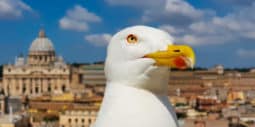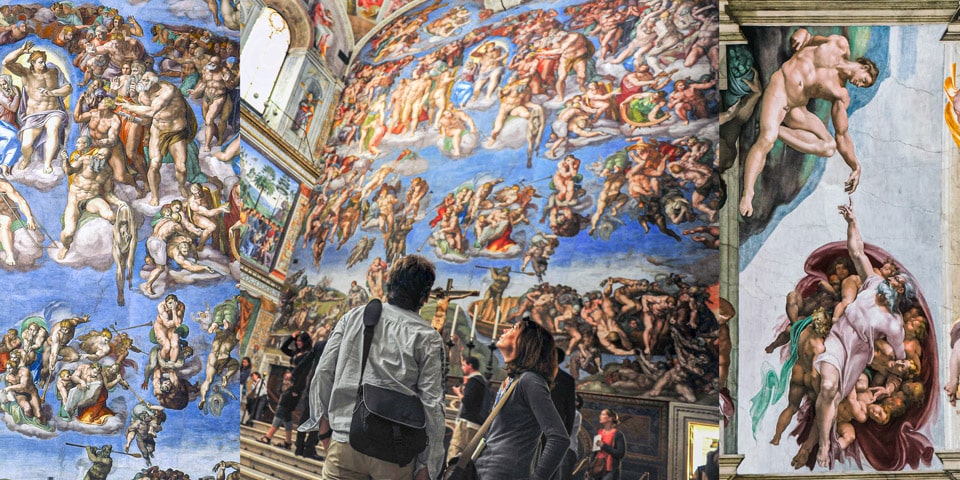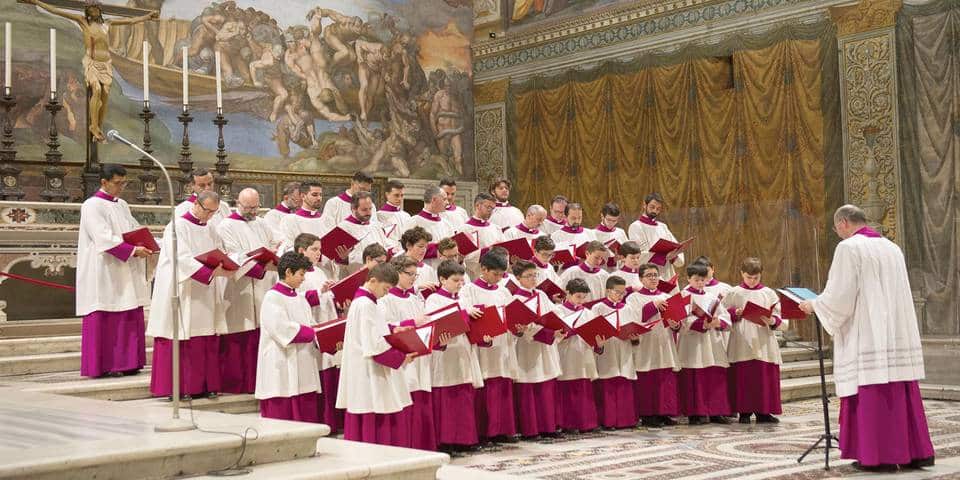

27373 travellers read

| Tickets |
Buy tickets online: |
|---|---|
| Tip | Focus on Michelangelo's ceiling, especially "The Creation of Adam," and "The Last Judgment" behind the altar. Also, admire the side wall frescoes by Botticelli, Perugino, and others, depicting scenes from the lives of Moses and Christ. |
| Opening hours |
Monday:
-
Tuesday:
-
Wednesday:
-
Thursday:
-
Friday:
-
Saturday:
-
|
| Recommended tour | |
| Closest bus stops |
|
| Closest subway stations | |
| Address | Viale Vaticano, Roma |
| Website | www.museivaticani.va |
Contents
ToggleThe Sistine Chapel (Cappella Sistina) is one of the chapels of the Apostolic Palace and one of the most treasured gems of Vatican City, Rome, and indeed the world. It is renowned for its architecture and intricately detailed frescoes. Additionally, it serves as the site where Popes are elected and crowned.
The election of a new Pope has taken place in the chapel since 1492, alongside other venues. From 1870 onwards, it became the sole location for papal conclaves. Both the walls and the ceiling are covered in remarkable frescoes. Notable artists who contributed to its decoration include Perugino, Michelangelo, Luca Signorelli, and Botticelli. The Sistine Chapel is located within the Vatican Museums.
Originally, it was the chapel of the Vatican fortress, known as the Cappella Magna. Its name derives from Pope Sixtus IV della Rovere (pontiff from 1471 to 1484), who commissioned its restoration between 1477 and 1480. Since then, the chapel has been used for celebrating papal liturgies and important Catholic ceremonies. The 15th-century wall decorations include trompe-l’œil draperies, scenes from the lives of Moses and Christ, and portraits of various Popes. The panels also depict events from both the Old and New Testaments.
Approximately 30,000 people visit the Sistine Chapel each day, with over five million visitors annually.
Despite its global fame, the exterior of the Sistine Chapel is relatively modest. It is a plain, rectangular brick building without ornamentation. There is no grand façade or processional entrance; all access is from within the Papal Palace.
Importantly, all electronic devices are strictly prohibited during papal elections. The 115 cardinals involved in the most recent conclave were thoroughly screened for listening devices before entering the chapel. Furthermore, speaking and photography are not allowed inside the Sistine Chapel.
Once the cardinals have entered, the doors of the chapel are closed with the declaration “Extra omnes”, meaning “Everyone out”.
To skip the queue for the Sistine Chapel and the Vatican Museums, it is essential to book online in advance. During the high season and around major religious holidays, tickets often sell out months in advance.
The chapel has existed since 1368. The present structure was designed by Baccio Pontelli and built under the supervision of Giovannino de’ Dolci.
The Sistine Chapel was restored by Sixtus IV, who commissioned the project in 1477. During his papacy, some of the most renowned Renaissance painters were invited to decorate the chapel’s interior.
Frescoes were painted by Sandro Botticelli, Pietro Perugino, Pinturicchio, Domenico Ghirlandaio, Cosimo Rosselli, and Luca Signorelli.
Two main fresco cycles were created at this time: one on the life of Moses, located on the left side of the altar, and another on the life of Jesus Christ, placed on the right. These were accompanied by portraits of previous Popes. The work was completed in 1482. On the Feast of the Assumption, Pope Sixtus IV celebrated the first Mass in the newly decorated chapel and blessed the Virgin Mary.
On 15 August 1483, Sixtus IV consecrated the chapel with the first Mass.
The chapel then became the setting for both religious and official papal functions. Today, it is most famously known as the site of the Papal Conclave. The two most iconic artworks within are Michelangelo’s Last Judgement, which depicts the Apocalypse of St John, and The Creation of Adam, which illustrates the moment from Genesis when God gives life to Adam.
Interestingly, Michelangelo’s great rival, Raphael, was accused by him of artistic plagiarism. Michelangelo claimed Raphael had borrowed heavily from his style. While Michelangelo was working on the Sistine Chapel ceiling, Raphael arrived in Rome and was visibly influenced by his techniques, particularly in his own work on the papal apartments. Before beginning work in the Sistine Chapel, Michelangelo had already completed his marble statue of David between 1501 and 1504 in Florence.
Read more about Michelangelo Buonarroti.
In the mid-16th century, the entrance wall frescoes were repainted following damage caused by the collapse of the chapel’s door in 1522. Hendrik van den Broeck restored the Resurrection of Christ (originally by Ghirlandaio), while Matteo da Lecce worked on the Dispute over the Body of Moses (originally by Signorelli).
A full restoration of the Sistine Chapel frescoes was carried out between 1979 and 1999. This included conservation work on the marble furnishings (cantoria), the altar screen, and the papal coat of arms of Sixtus IV.
One of the most admired paintings in the chapel is the Baptism of Christ, completed in 1482 by Pietro Perugino. Measuring 540 cm by 335 cm, the fresco depicts Christ, John the Baptist, the Holy Spirit as a dove, God in a radiant cloud, angels, cherubs and seraphim, a crowd of people, the River Jordan, and a Roman landscape including the Colosseum and the Pantheon.

Commissioned by Pope Julius II, Michelangelo painted the entire ceiling of the Sistine Chapel. It took him four years to complete the frescoes, from 1508 to 1512.
The work created by Michelangelo transformed the course of Western art.
Before taking on this monumental project, Michelangelo was already renowned for his sculpture. His masterpieces such as the Pietà and David had secured his reputation, although his abilities as a painter were initially underestimated. According to Vasari, Pope Julius II was persuaded to give Michelangelo the fresco commission by the painter’s artistic rivals, Bramante and Raphael, perhaps hoping he would fail.
Michelangelo’s first painting was the fresco of Noah, located on the entrance side of the chapel. Once he completed this panel and removed the scaffolding, he realised the figures were too small for the ceiling’s height. As a result, the figures in the subsequent scenes became increasingly larger, especially towards the altar end. To enhance the illusion of structure, he added fictive architectural mouldings and painted grisaille statues (grey-toned images) along the sides, framing the central Old Testament scenes to resemble sculpted fixtures.
To reach the ceiling, Michelangelo constructed custom scaffolding. Rather than building it up from the floor, he devised a wooden platform supported by brackets inserted into holes in the walls. As he progressed in stages, the scaffolding was moved across the chapel accordingly. He employed the fresco technique, applying pigment onto fresh, wet plaster. For depth, Michelangelo sometimes scraped away sections of the wet plaster before painting.
Because plaster dries quickly, Michelangelo painted in sections, applying new layers daily. These divisions are called “giornata” and are still visible today.
The theme of the Sistine Chapel ceiling is drawn from the Old Testament, specifically the Book of Genesis. The frescoes illustrate the relationship between humanity and God. Each segment of the ceiling portrays scenes from biblical narratives.
The Creation of Adam is the most iconic image in the Sistine Chapel and occupies the central portion of the ceiling. This scene from Genesis shows God giving life to Adam.
The near-touching fingers of God and Adam have become an enduring symbol of humanity and divine connection.
This painting has been reproduced and parodied more than any other religious artwork in history. God is shown with a flowing white beard, cloaked in drapery, while Adam lies nude and relaxed. God’s extended right arm transmits the spark of life to Adam’s reaching hand. Adam’s left arm mirrors God’s to symbolise that man is created in God’s image. Scholars have long debated the identity of the figure cradled under God’s left arm—suggestions include Eve, the Virgin Mary, Sophia (wisdom personified), or a feminine angel.
Between 1536 and 1541, Michelangelo painted the monumental Last Judgment mural on the altar wall of the Sistine Chapel, commissioned by Popes Clement VII and Paul III. The fresco represents the Apocalypse of St John, showing the saved ascending to join Christ and the saints, while the damned are cast down for punishment. The dimensions of the painting are 13.7 by 12.2 metres.
The painting took nine years to complete.
Michelangelo began the Last Judgment nearly three decades after completing the ceiling. The mural sparked controversy due to the nudity of its figures. Cardinal Carafa accused Michelangelo of obscenity, launching a censorship campaign with Monsignor Sermini. As a result, Daniele da Volterra was later commissioned to cover the genitals with painted drapery.
Michelangelo included his own portrait in the fresco, depicting himself as the flayed skin held by St Bartholomew.
Michelangelo’s Creation of Adam, completed in 1512, contains a hidden image that went unnoticed for 487 years. Scholars have interpreted the red cloak surrounding God as a detailed anatomical representation of the human brain. While the fresco is commonly seen as God bestowing life upon Adam, this theory suggests the inclusion of intellect as a divine gift.
The Sistine Chapel frescoes underwent various interventions prior to the major restoration campaign that began in 1980. Much of the early damage was due to water infiltration from the floor above.
In 1625, Simone Lagi, the chapel’s resident gilder, carried out restoration work. He applied linen cloths to the ceiling and cleaned the frescoes by rubbing them with bread, claiming the artworks “were returned to their previous beauty without receiving any harm.”
Another restoration occurred between 1710 and 1713, led by the painter Annibale Mazzuoli and his son. They used sponges soaked in Greek wine and applied glue varnish. Unfortunately, some colour was lost due to salt efflorescence, and this restoration mainly focused on the ceiling, with little attention paid to the lunettes.
Between 1935 and 1939, the Vatican Museums’ Restoration Laboratory undertook another phase, reinforcing areas of the intonaco at the eastern end and removing accumulated dirt.
Modern restoration efforts began in 1979. Led by Gianluigi Colalucci, Maurizio Rossi, Piergiorgio Bonetti and others, the team followed restoration principles set by Carlo Pietrangeli, director of the Vatican’s Laboratory for the Restoration of Pictures.
A critical part of the restoration was the study and analysis of the frescoes. Between 1980 and 1984, the first phase focused on Michelangelo’s lunettes. The restoration of the ceiling was completed in 1989, followed by the Last Judgment, which was unveiled by Pope John Paul II on 8 April 1994. The final phase, restoring the remaining wall frescoes, concluded in 1999.
Test your knowledge of the Sistine Chapel by answering the following popular questions—without peeking!
Author: Kate Zusmann
This website uses cookies. For more info read the cookies policy
RomeItaly.guide © 2025. Created with love by Roman experts and guides.